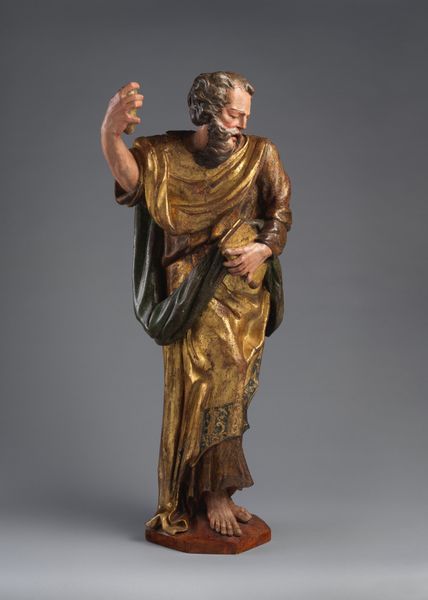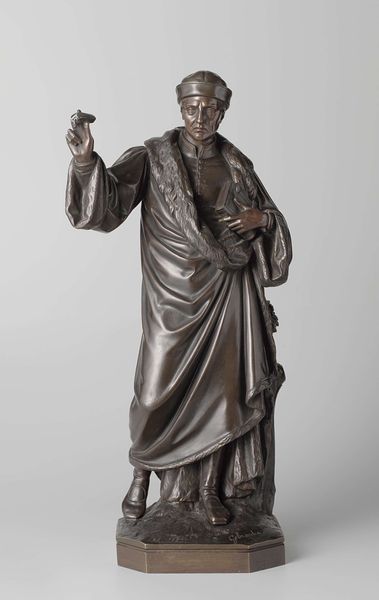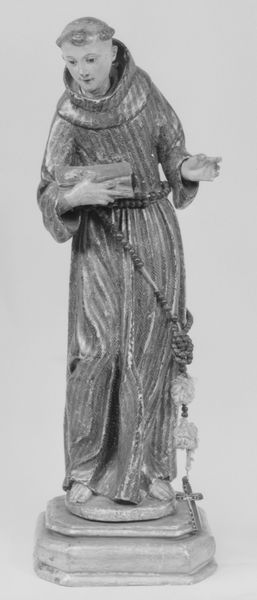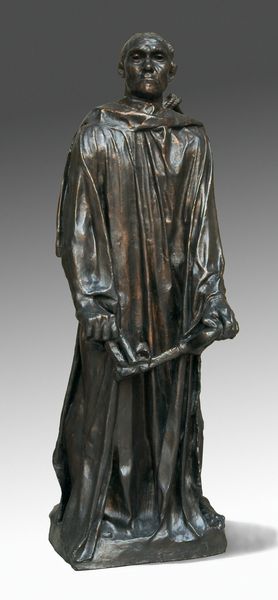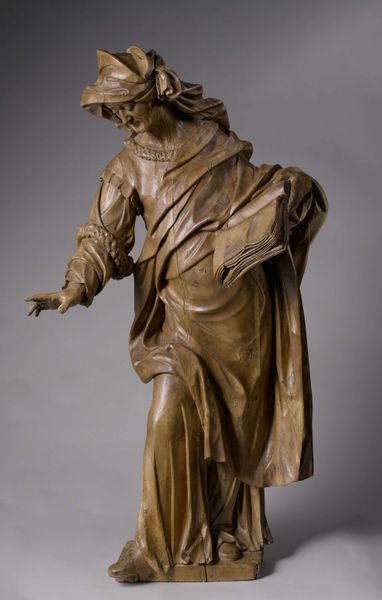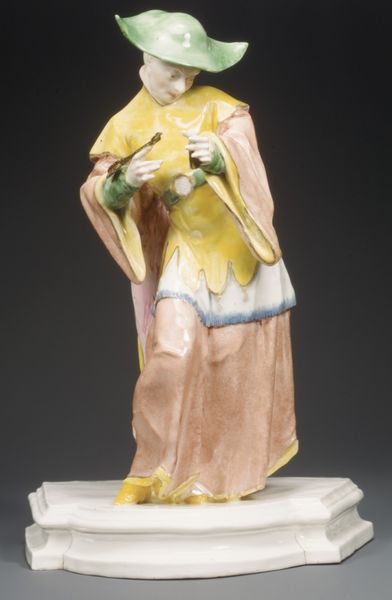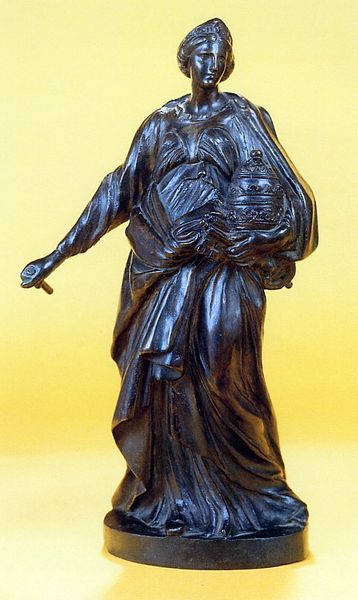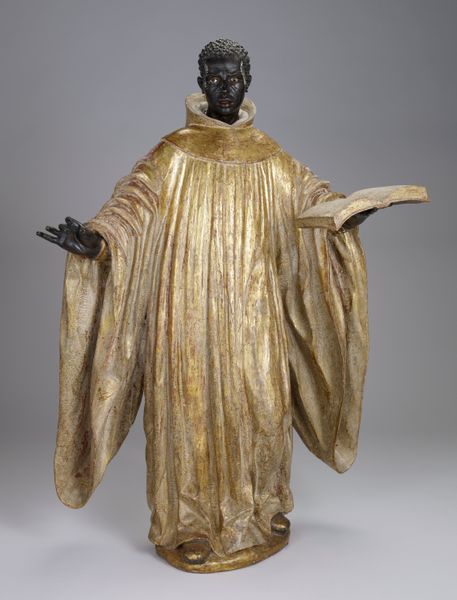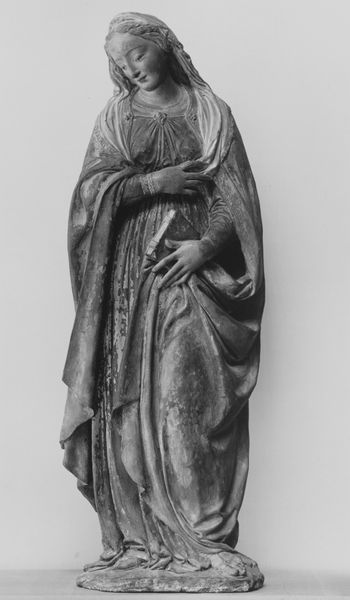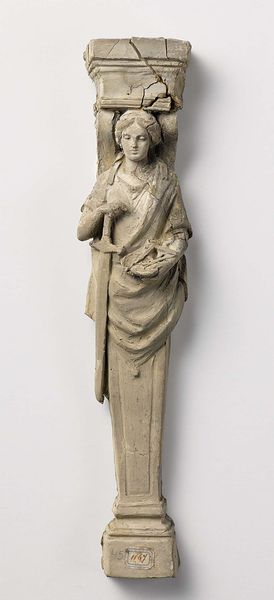
sculpture, wood
#
portrait
#
medieval
#
figuration
#
sculpture
#
wood
Dimensions: 45 x 17 x 12 1/2 in. (114.3 x 43.18 x 31.75 cm)
Copyright: Public Domain
Curator: Good morning! We’re looking at “Saint Leonard,” a striking wooden sculpture created by Hans Klocker sometime between 1495 and 1510. It’s currently housed here at the Minneapolis Institute of Art. Editor: The first thing that strikes me is how incredibly shiny the gold is. It feels less spiritual and more… gilded. I wonder if it was always this way, or if the sheen is from restoration. Curator: The application of gold leaf was actually very common during the late medieval period for depicting religious figures. It signaled their importance, their divine connection. These sculptures were not only art objects, but focal points for faith. The figures had public and pedagogical functions within religious festivals. Saint Leonard here holds what appears to be a book, a symbol of his spiritual learning and wisdom. Editor: Absolutely, the sheen catches the light and commands your attention. But also... it obscures. It almost feels like a metaphor for how power or authority—religious or otherwise—can dazzle and blind us. Does knowing about the gold’s purpose alter how people saw this sculpture and how power was viewed at that time? Curator: The public function of the sculpture certainly was key. We need to remember how pervasive religion was. A sculpture like this served as a potent visual tool for conveying moral lessons, social expectations, and of course, stories from the Bible. But you're right; that shine isn't innocent. It represents power structures. Commissions for gilded art were a method to project economic power. Religious imagery helped solidify this earthly power by linking it to spiritual authority. Editor: So it's not just a serene depiction of a holy man; it's entangled with systems of governance, the social hierarchy, and, dare I say, a bit of medieval propaganda. The sculpture reminds me that every image is a negotiation of power, whether consciously or unconsciously. It is very telling that something meant to signify spirituality carries the mark of wealth and earthly ambition. It is like a material manifestation of institutional power itself. Curator: And these complexities inhere in much of the art that persists through history; art and objects become traces through which we must navigate both aesthetic achievements and histories of material social power. Thank you for shedding light on Saint Leonard, perhaps encouraging audiences to reconsider its place in the medieval milieu.
Comments
No comments
Be the first to comment and join the conversation on the ultimate creative platform.
